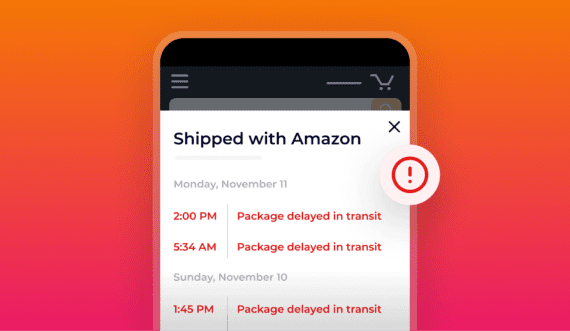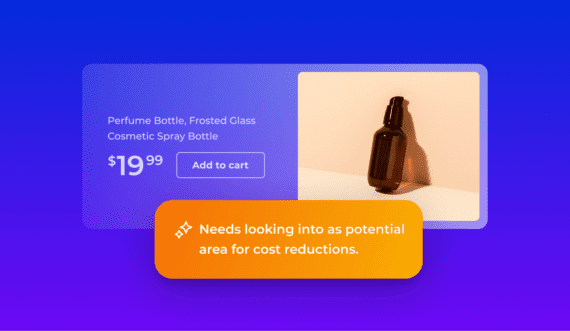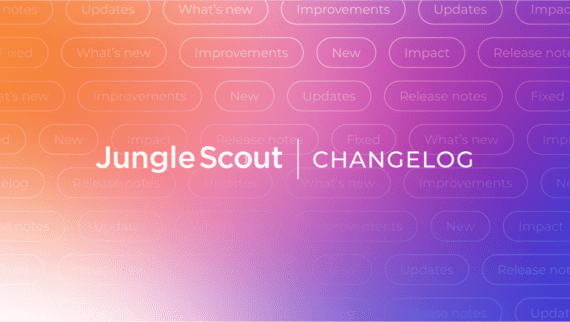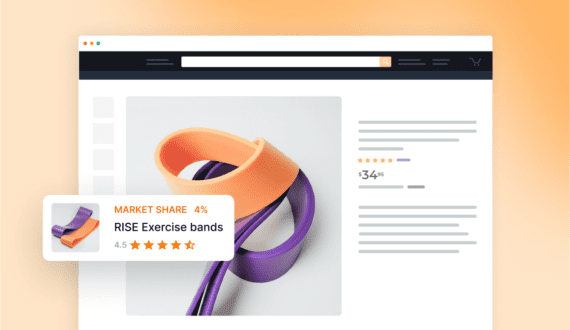If you’ve been selling on Amazon long enough, you know its fee structure frequently changes. But a recent update made a lot of Amazon sellers unhappy — especially two new Amazon FBA fees that include how much inventory you should have at a fulfillment center and how your products are sent to Amazon FBA.
If you go through an Amazon seller-related forum or group, you’ll notice a lot of chatter about how Amazon’s new fee structure will negatively affect their business.
In this article, we’ll go over what changes Amazon is making and how these changes may affect your Amazon business.
Understanding Amazon’s new FBA fee structure
Amazon’s revised fee structure includes several changes, including adjustments to referral fees, fulfillment fees, inventory fees, placement fees, and storage fees.
Here I will quickly summarize the fee changes; then, I will go into the major changes many sellers have been having issues with.
For a more holistic look at all of Amazon’s seller fees, check out our complete guide to Amazon FBA fees.
2024 FBA fulfillment fee changes
Overall, the FBA fulfillment fees will be reduced, which obviously is good news for sellers.
As stated by Amazon, “Starting April 15, 2024, on average, we will decrease FBA fulfillment fees for standard-size products by $0.20 per unit and for Large Bulky-size products by $0.61 per unit. This is the same date that the first inbound placement services fees will begin to be charged.”
Amazon made changes to its size tiers:
- The small standard-size tier will be measured at intervals of 2 ounces
- The large standard-size tier from 1+ to 20 lb will be measured at intervals of 4 ounces.
Here is the new rate card:

Amazon is also replacing the small, medium, large, and special oversize tiers with the new large bulky and extra-large size tiers. 
How does this affect sellers?
While this will result in most products having a reduced fulfillment rate, it may increase for some. Please review this carefully to ensure you fully understand what your new fulfillment rate will be.
New FBA inbound placement service fee
This is the new fee that sellers are all up in arms about — but for good reason. The previous FBA inventory placement service allowed sellers to send their inventory to one warehouse location, and Amazon would then split it up for a small, reasonable fee.
Now, with the new FBA inbound placement service fee, Amazon claims that the placement fees, on average, will increase the standard-size by $0.27 per unit and $1.58 per unit for Large Bulky-sized products, which may not sound like a lot, but it makes a big difference.
How does this affect Amazon sellers?
Amazon does give you the option to pay reduced fees or even no fees based on whether you send your shipment to a single location or multiple locations — but some sellers in the Amazon Seller Central forums are reporting that they don’t have the option to split to multiple locations to have no fee.



So, on top of the shipping costs, some sellers seemed to be getting forced into paying the new inventory placement fee, sometimes 2x, 3x, 4x, or 5x their shipment costs.
Many sellers, as you can see throughout the forums, state that those increases are unsustainable for their business.
Here is what some Redditors are saying about placement fees.
This is what it should look like for sellers when creating a shipment:

Theoretically, you should have these three options. If you split your shipment up 5 ways, there is no additional inventory placement fee. But, if you are shipping five different boxes versus three, your overall shipping cost will likely be higher than normal, even without the placement fee.
Even one of our internal Amazon sellers at Jungle Scout is experiencing issues with this new fee.
“Amazon is charging a placement fee now to ship to one location. For me, it’s about an extra 27 cents per unit, at least on this shipment. I don’t even have the option to send to multiple locations, because I’m not sending single SKU boxes (never have). What should be a $30 UPS charge to send into Amazon FCs is now $170 with this new fee.”
Some sellers stated they would look into other fulfillment options, such as using a third-party fulfillment center or shipping the products themselves. Or, even move off of Amazon all together.
Ships in Product Packaging (SIPP) program
Good news here, I promise. With Amazon’s new Ships in Product Packaging program, formerly known as Ships in Own Container (SIOC), sellers can receive a discount on fulfillment from $0.04 to $1.32, depending on the product size and weight.
How does this affect sellers?
If you are able to ship your product in its original packaging, you can save on Amazon fulfillment costs. If your product is not eligible for the program at this time, work with your supplier to see how you can improve your packaging in order to take advantage of this program.
Learn more about the requirements and how to enroll here.
New low inventory fee
This is another new fee that sellers are very upset about. Before, if you stored too much inventory, you would be hit with a long-term storage fee. Now, if you have too little inventory, you will be charged a low inventory fee. C’mon Amazon.
Here is what Amazon says about the new fee,
“Effective April 1, 2024, a low-inventory-level fee will apply to standard-size products with consistently low inventory relative to customer demand. When sellers carry low inventory relative to unit sales, it inhibits our ability to distribute products across our network, degrading delivery speed and increasing our shipping costs.”
“A low-inventory-level fee will only apply if a product’s inventory level relative to historical demand (known as “historical days of supply”) is below 28 days. We will only charge a low-inventory-level fee when both the long-term historical days of supply (last 90 days) and short-term historical days of supply (last 30 days) are below 28 days (4 weeks). For example, if a product’s short-term historical days of supply is above 28 days but long-term historical days of supply is below 28 days, the low-inventory-level fee won’t apply.”
So, basically, the fee is based on historical sales data of your product. Amazon wants to ensure that your product is always available for their customers. 
How does this affect sellers?
As you can imagine, sellers are not happy with this fee either. If you don’t time your inventory perfectly, you’re going to be charged additional fees. This makes managing your inventory even more difficult.
Learn how to automate your inventory management with Jungle Scout Inventory Manager.
Sellers who are reducing their stock or discontinuing a product would also be affected by this new fee. Unfortunately, there is no way to exempt your products from this fee, even if you don’t plan on restocking.
Let’s see what sellers have to say about the low inventory fees.


FBA monthly inventory storage fee changes
As all Amazon FBA sellers know, Amazon charges you monthly storage fees for the inventory you have stored throughout their fulfillment network.
Effective April 1, 2024, Amazon will actually reduce the off-peak monthly storage fees (January-September) by $0.09 per cubic foot for standard-size products. There will be no change to large bulky or extra-large products.

How does this affect sellers?
Well, any savings you can get is a good thing, right? According to Amazon, this fee reduction will help sellers to maintain sufficient levels of inventory.
Storage utilization surcharge changes
Effective April 1, 2024, Amazon revised its policy on storage utilization surcharges. These surcharges apply when sellers maintain excess inventory that surpasses recent demand and sell-through rates in Amazon’s Fulfillment Centers.
“The surcharge is based on storage utilization ratio, which is the ratio of your average daily inventory volume stored divided by the average daily shipped volume during the past 13 weeks. The ratio is calculated for each product size tier, which means you may have a storage utilization ratio for standard-size and a different storage utilization ratio for oversize.”
If your storage utilization ratio is above 22 weeks on the last day of the month, your inventory during that month will incur a storage utilization surcharge.

How will this affect sellers?
Sellers need to be sure that their sell-through rate is high enough to avoid the storage utilization surcharge. You can check your sell-through rate and your storage utilization ratio from your FBA Dashboard in Seller Central.

Aged inventory surcharge changes
The aged inventory surcharge, formally known as long-term storage fees, is charged on units stored in Amazon’s fulfillment network for 181 days or longer.
This fee will now be increasing for inventory stored between 271 to 365 days. Surcharges will remain unchanged for inventory stored between 181 to 270 days and inventory stored for 365 days or more.

How will this affect sellers?
If you have inventory that is in Amazon’s fulfillment centers for longer than 271 days, you can expect to pay much more in aged inventory surcharges. To avoid this fee, again, take a look at your sell-through rate and determine which products are slow movers.
FBA removal, disposal, and liquidation order fee changes
Effective February 5, 2024, the fee to remove or dispose of your inventory from Amazon’s fulfillment centers will increase. The liquidation fee will remain the same.
Amazon offers inventory removal or disposal services for sellers who have inventory they can no longer sell or to avoid an aged inventory surcharge. Here are what the new fees will be.

How will this affect sellers?
If you need to remove inventory from Amazon for any reason, it will now cost you more to do so. If you do not need to have the inventory sent back to you, we recommend looking into Amazon’s liquidation service, which allows you to recover a portion of your inventory cost.
New returns processing fee
Effective June 1, 2024, Amazon will introduce a returns processing fee for high-return rate products in all categories, excluding apparel and shoes, to manage the operational costs of returns and reduce waste.
The fee only applies to products that reach the return rate threshold specific to each category. Amazon states the return rate thresholds will be published on May 1, 2024.
From Amazon, “Your product’s return rate will be the percent of your product’s shipped units in a given month that’s returned by customers over that month and the subsequent two calendar months.
For example, for units shipped in June 2024, the return rate is the percent of those units returned over June, July, and August 2024. For a given month’s shipped units, the returns processing fee will be charged for each returned unit above the product category’s return rate threshold.
You will see return fees charged to your account between the 7th to 15th day of the third subsequent month. For example, for June 2024’s shipped units that are returned and are charged the fee, the charge will be made between the 7 to 15th of September, 2024.”
How Amazon’s Return Policy Affects Sellers in 2024
On May 1, sellers will be able to view their product return rates in the FBA returns dashboard in Seller Central.
Here are the return processing fees.

How does this affect sellers?
If your product returns go over the threshold for that specific category, then you will be charged additional return fees. Sellers need to figure out what the biggest reason for product returns is and try to remedy that situation. Returns are inevitable in ecommerce but you need to do everything you can to reduce the amount of returns.
Additional expanded services and benefits
It’s not all bad news! Here are some new expanded services and benefits that Amazon will be offering sellers.
- Reduced referral fees for apparel products. For items priced under $15, Amazon will decrease referral fees from 17% to 5%. For products priced between $15 and $20, Amazon will decrease referral fees from 17% to 10%.
- US FBA New Selection program changes. Amazon will provide an average 10% sales rebate for eligible new-to-FBA parent products.
- Supply Chain by Amazon. Amazon will introduce updated rates and new benefits for Supply Chain by Amazon and provide new discounts for products that are auto-replenished by Amazon.
- New Amazon Vine fee structure. Amazon applied new fee tiers to the Amazon Vine Program, making it more affordable to get new product reviews with the program.
How will these new fees affect your Amazon business?
We know this is a lot of changes and all of these new fees can be a little overwhelming. Make sure to save this article so you can reference back to it later and review all of Amazon’s fee changes within Seller Central.
It is still more possible than ever to be a successful seller on Amazon; you just need to be fully aware of the rules and, of course, the fees you will be paying. Let us know in the comments below if you have any questions about Amazon’s new fee structure.
Learn more about how you can use Jungle Scout to start, grow, and run your Amazon business.
Brian Connolly is an Amazon seller, ecommerce expert, and writer for Jungle Scout. He lives in the New Jersey Shore area with his wife and cat. When he isn’t writing advice online for aspiring and experienced Amazon sellers for Jungle Scout, he spends his free time boating, fishing, and selling boating-themed items on his Amazon business.










